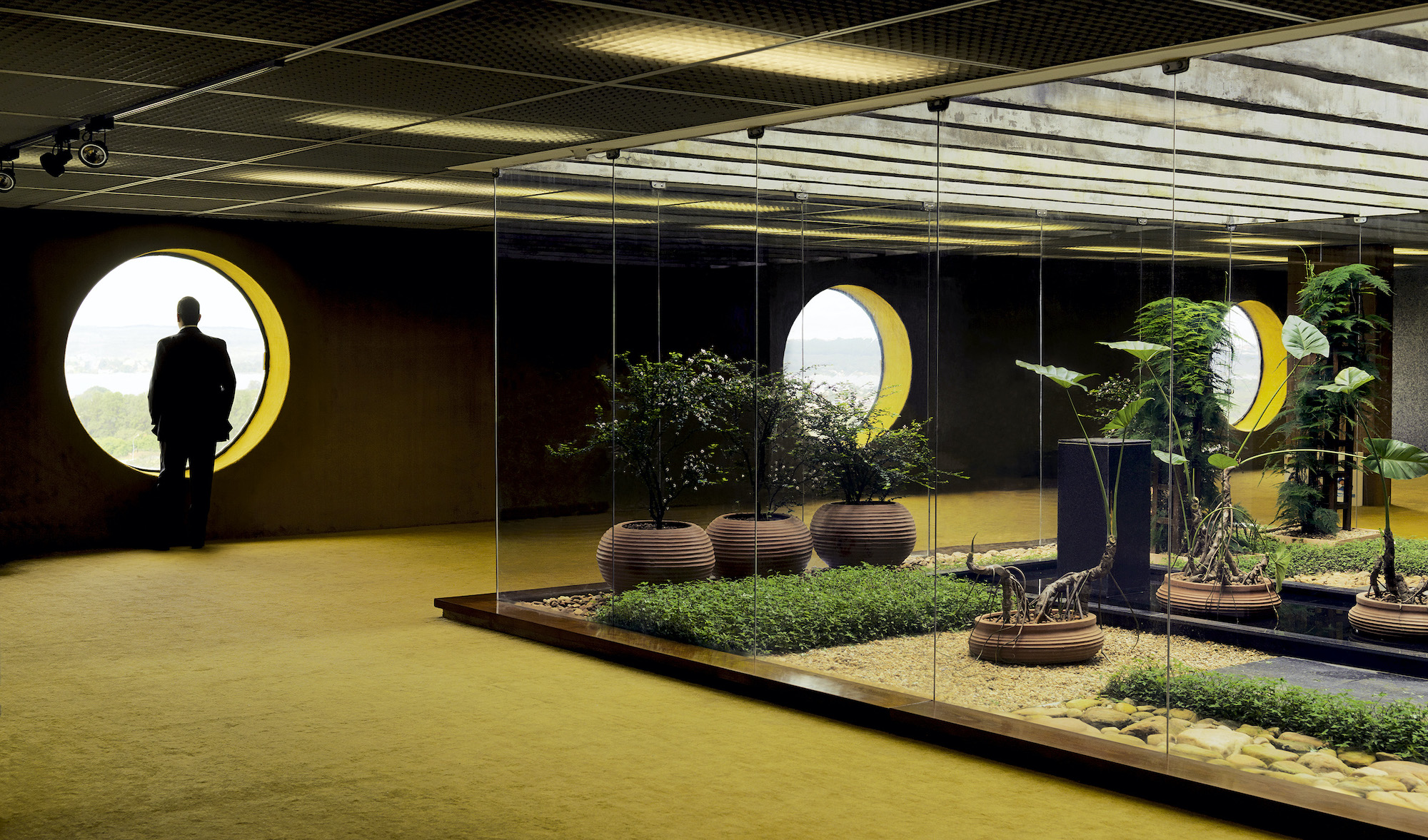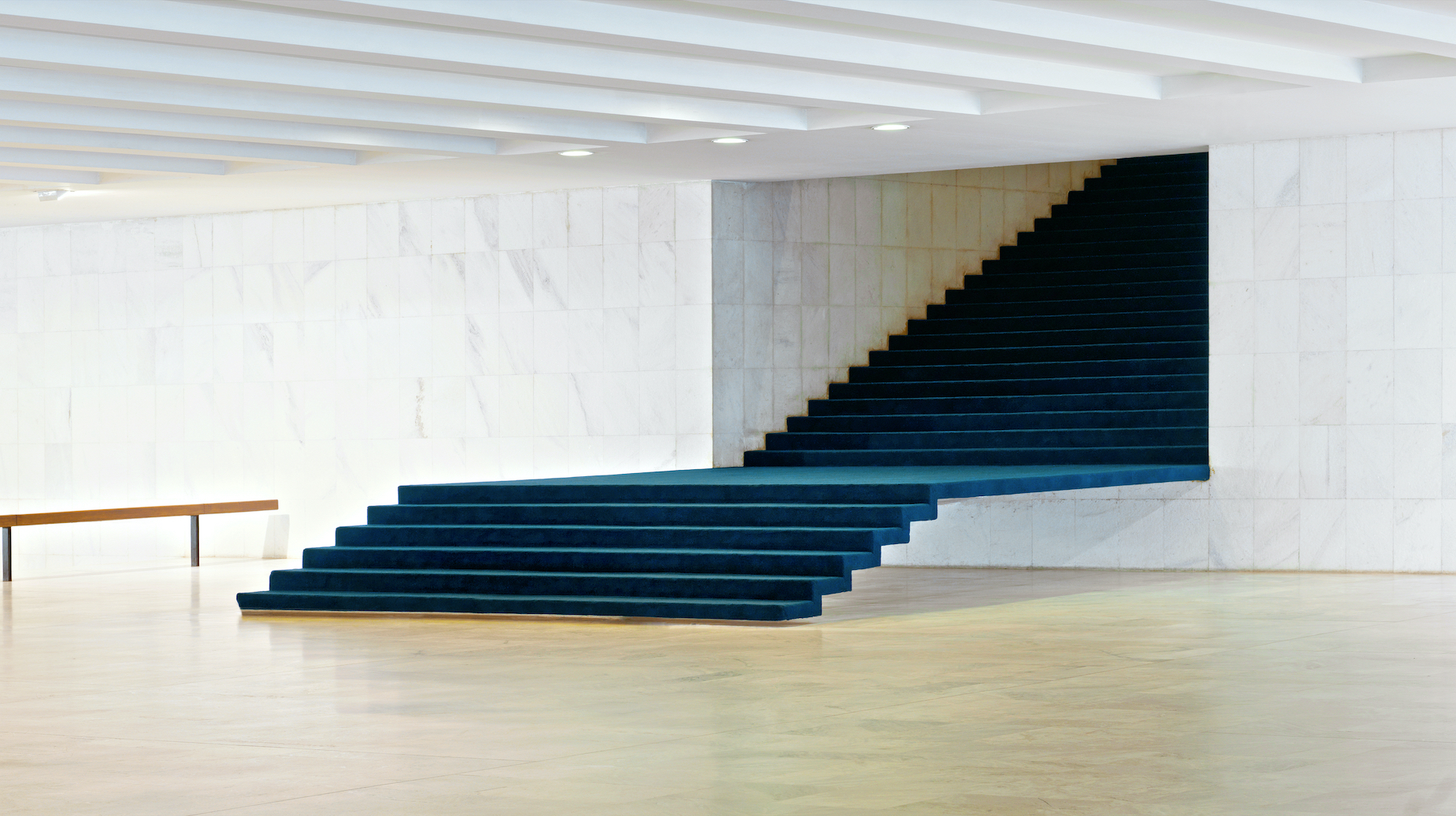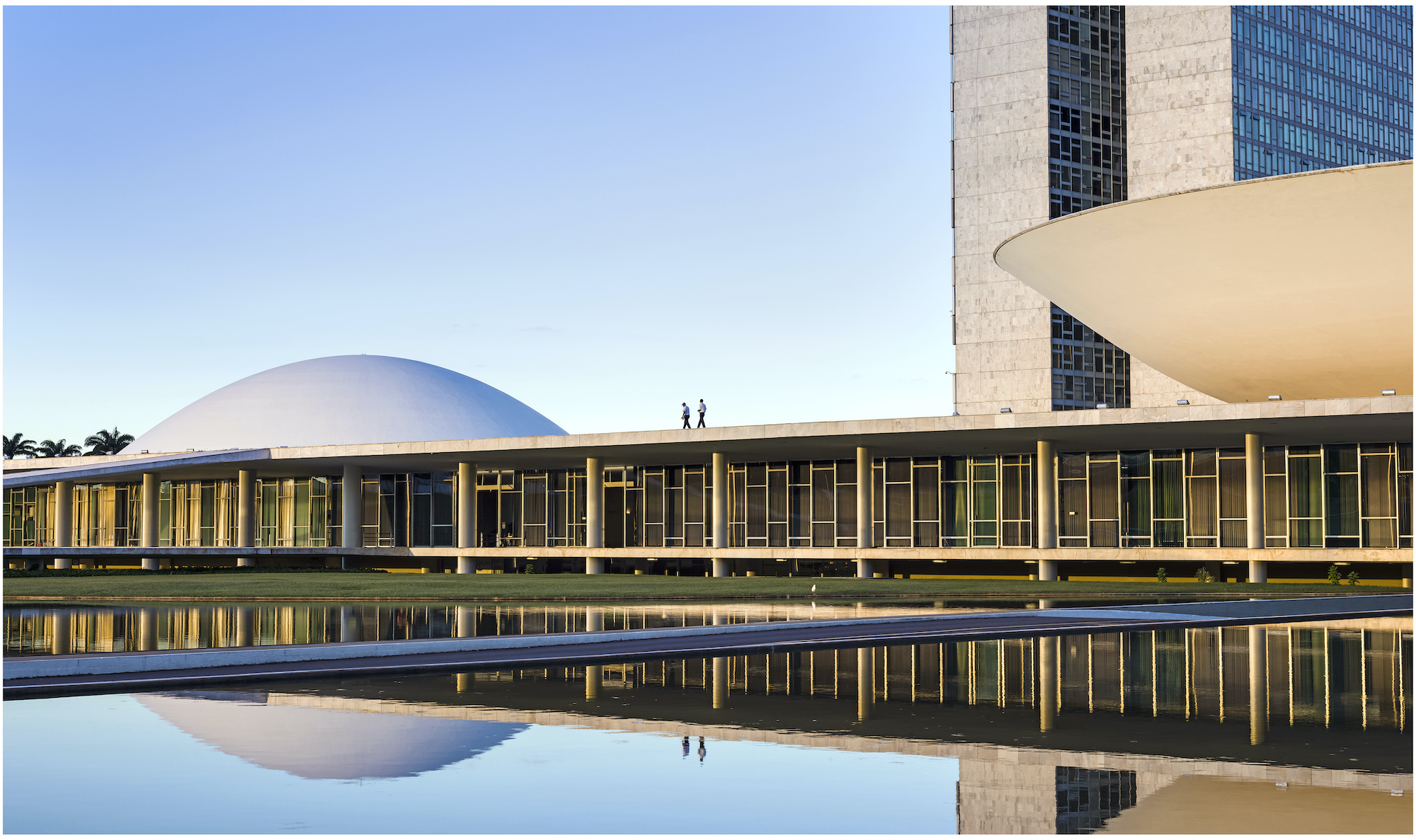French visual artist and photographer Vincent Fournier speaks to Effect Magazine about Brasília – his extraordinary body of work chronicling Oscar Niemeyer’s mid-century Brazilian capital city
The beautiful, compelling and unnerving images of Vincent Fourier have been surfacing with an increasing tempo across the globe, and it’s surely because they speak so eloquently to our need to chronicle these strange times. Already part of the MET’s permanent collection in New York and the LVMH collection in Paris, appearances over the past year include the Saatchi Gallery’s Civilization exhibition, the Spazio Nobile stand at PAD London, and the artist’s solo show at Musée De La Chasse & De La Nature. That outing was dedicated to Uchronie, an extraordinary study into nature, rendered alien by Fournier’s uncanny ability to show us the familiar in an entirely unfamiliar way.

While Uchronie is a thrilling body of work, it’s a testament to the depth of the artist’s hinterland that as the doors closed on that show, a new retrospective was opening up at the Dorado Beach East Ritz Carlton Reserve in Puerto Rico, where Arthur Dohr of La Roche Interiors mounted a must-see excursion into Fournier’s Brasília series of images recording the Modernist Brazilian capital.
Vincent has an extraordinary ability to create visual narratives that are both nostalgic and futuristic. His photography… invites viewers into a world of possibility and imagination.”
Arthur Dohr of La Roche Interiors
“I was profoundly drawn to his unique vision and the evocative way in which he blends science, technology, and art,” says Dohr. “His creations struck a chord with me due to their distinct ability to encapsulate a sense of time and place, while also projecting a vision of the future.” He adds: “Vincent has an extraordinary ability to create visual narratives that are both nostalgic and futuristic. His photography doesn’t just capture moments; it invites viewers into a world of possibility and imagination.”

One of Fournier’s strengths is that each body of work he produces is highly distinctive, yet each gives voice to his thematic preoccupations as an artist in ways that are both original and consistent. Kosmic Memories explores our reaching for a utopian future through the eyes of communist-era Eastern European monuments, rendering these dreams as strange artefacts. In Brasília, Oscar Niemeyer’s Tropical Modernist utopia is in many ways the ultimate muse for Fournier, and Fournier is the chronicler and lens Brasília was always destined to have. We sat down with the French visual artist to find out more.
The Brasília in your work is beautiful, but also melancholic. How did you capture this, and why did you want to convey this?
My interest in the city of Brasília comes from a mixture of fascination and nostalgia for the stories and representations of the future. Oscar Niemeyer’s city, the Brazilian capital built in four years in the middle of a desert, embodies the vision of the future inherited from the 1960s. The pilot plan conceived in 1957 by the urban planner Lucio Costa coincides with the beginning of the Space Age and the first artificial satellite of the Earth: Sputnik. It is therefore the golden age of the Space Age, and the city of Brasília – with its air of a flying saucer landed in the middle of nowhere – expresses the nostalgia and the dream of a future that remains frozen in time.

It’s unique in its size – an entire city – and in its state of preservation: the pilot plan has remained unchanged due to its inclusion as a Unesco World Heritage site. A Modernist temple fossilized in a utopian future, Brasília is like a time capsule.
The city of Brasília expresses the nostalgia and the dream of a future that remains frozen in time.
Vincent Fournier
I thus practised the city as a set whose inhabitants are staged. During my wanderings, different stories came to my mind: this strange empire whose geographical map covers the whole territory, in De la rigueur de la science by JL Borges (1946); the story of a man who waits all his life for an event that will not happen, in Le Désert des Tartares by D Buzzati (1940); or the one where the hero lives in an illusion, in The Truman Show by P Weir (1998). It is also necessary to show the staggering and crazy beauty of the city of Brasília, where absolutely everything is composed with the same writing: linear, precise, minimal, fluid, radical, aerial, monumental, musical…

There are some poignant character portraits in Brasília. How did you approach these compositions?
I used the city as a set and staged its own inhabitants. My goal was to compose pictures from narrative, aesthetic and sometimes absurd situations. In fact, instead of gathering the inhabitants in a shared space as Oscar Niemeyer wanted, the city has separated and distanced them from each other. We find this contradiction in the island Utopia of Thomas More’s book, whose perfection rests largely on the uniformity of all its elements, both geographical, architectural and human. In the island of Utopia, there is no diversity – the inhabitants all lead the same existence, work the same hours and live in the same houses.


What do the figures in your Brasília works say about the interaction between humans and the vast architectural scale of Oscar Niemeyer’s vision?
To walk in the city of Brasília is also to experience the emptiness, an emptiness moreover always in dialogue with the full. In fact, the space of the city is so rationalized that even the empty places are integrated like so many units in the great frame of the general plan. It seems as if everything is based on a very geometric and abstract conception of space, as if the mathematical universe absorbed the physical universe. It is a very strange sensation, the feeling of being alone, lost in a setting whose scale exceeds the measure of man.”

How does Brasília fit into your wider body of work?
My interest in Brasília comes from my fascination with the way we see and imagine the future. All my projects – space exploration, humanoid robots, the transformation of living through technology or utopian architecture – explore different visions of the future. It can be the future of yesterday, the old images of the future or the one we imagine for tomorrow. I went to Brasília with this idea in mind. Brasília was born at the beginning of the space age and the whole aesthetics of the city is largely inspired by it. It is the dream of space and the race towards the future that is embodied in a metaphorical and anticipatory way in the architecture of the city.

The porthole-windows recall those of Gagarin’s space capsule, the passages that connect the different buildings evoke the long corridors of the orbital stations, and the architecture on stilts anticipates the “chicken legs” of the future lunar landing modules. The metaphor is sometimes even more obvious, as in the case of the National Museum, encircled by a ring of Saturn [top]. Moreover, this city, that fantasized about space and invented its own future, has remained frozen in time. Brasília is thus a bubble out of time – a time capsule where the dream of the future of the 1960s is offered with nostalgia. It is magnificent and fascinating how the Brazilian capital was conceived with the same aesthetics and coherence. What rigour and what madness!

See Vincent Fournier’s work in April 2024 in the Spazio Nobile Gallery booth at PAD Paris and the Rabouan Moussion gallery at Art Paris
Read more: Interiors | Design | Pro Q&A | France | Brazil | Vincent Fournier | Modernism



